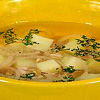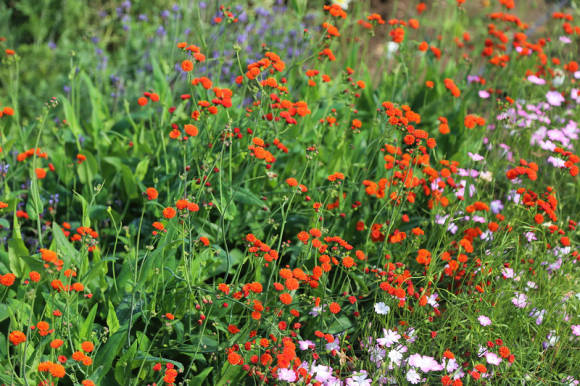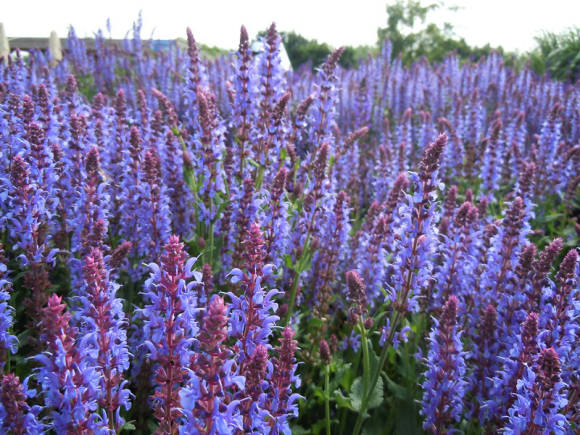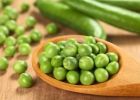"Without a bow, a handless cook" - that's really true! After all, when cooking, we do not add it to fruits. And how interesting it is to grow it, especially with the modern assortment of planting material - as a result, you can get bulbs of different sizes, colors, shapes, even tastes - in a word, any "style". What's more, there are several ways to grow onions, and each gardener can choose the right one for his capabilities.
From seeds - the most fashionable way
Why do I say fashionable? Because the choice of seeds in beautiful bags is so wide and the photographs on those bags are so good that it is simply impossible to pass by without buying a couple of them. And how impressive the size of the bulbs! Producers promise that a small seed will grow into an onion weighing sometimes 500 kg in one year! And it really grows. Two of my relatives even compete - they try to grow onions as large as possible: they buy seeds of sweet salad varieties Exhibishen, Globo, Bogatyrskaya strength, Russian size XXL and others, and in the fall they boast of the results. But so far they have a draw - the bulbs are approximately the same size and weighing 300-400 g.
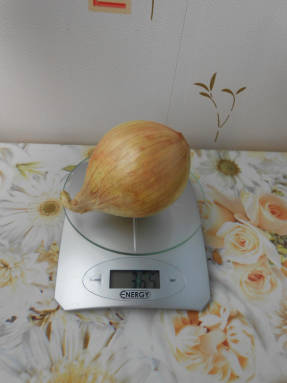 |  |
At the very end of February - beginning of March, they sow seeds (nigella) in containers about 10 cm high (usually in cake boxes). The container should have drainage holes, and even better - and a layer of expanded clay at the bottom. Soil - purchased peat soil or garden land stored in autumn, "lightened", for example, with sand. The soil, especially if it is purchased, must be spilled with a hot dark pink solution of potassium permanganate. The grooves are made 1 cm deep with a distance of 1.5 cm and the seeds are laid out again after 1.5 cm so that the onion seedlings do not have to dive. The grooves are sealed with soil, the container is covered with foil and placed closer to the battery. The first loops of shoots sometimes appear in 2-3 days, and mass shoots - in about a week, although sometimes the seeds "think" a little longer. When seedlings appear, the film should be removed and the seedlings should be provided with good lighting.
If necessary, you need to water the seedlings, add soil to the onion "strings" so that they do not fall. When the seedlings have a couple of leaves available, it is advisable to feed them with a complex mineral fertilizer with microelements for seedlings. When the seedlings acquire the third leaf, you need to trim the entire aerial part to this feather. In mid-May, as the weather permits, the seedlings are planted in open ground on a bed in grooves located at a distance of 30 cm from each other.
My relatives take out a soil clod with seedlings, put it in a basin of water, wash off the soil from the seedlings. What for? To free the roots and shorten them and the aerial part by a third - in this form, the seedlings will quickly take root in a new place. The onions were planted at a distance - one 30 cm, the other 20 cm. As a result, the bulbs turned out to be the same size and both began to be left 20 cm between the bulbs in subsequent years in order to save space in the beds.
As for the preferences of our family, the taste of huge salad onions seems to us bland compared to the old familiar varieties. As the saying goes, "the taste, the color ...". You cannot add it to salting, it is suitable for food only fresh. And such a bow can only survive until the New Year. By the way, for this reason, you will not find sevka of these varieties, only seeds.
Therefore, we have been growing the Stuttgarter Riesen variety from seeds for a very long time - large, juicy and with a real, pronounced onion taste. Stored flawlessly until the next harvest. When grown in a seedless way, that is, by direct sowing into the ground in early May, bulbs weighing 70-100 g grow. And when this variety is grown from seedlings, the bulbs usually weigh 150-200 g, and some specimens reach 300 g. When sowing seeds in the ground, we make transverse grooves every 10-15 cm and sow seeds with a distance of 15-20 cm, the seeding depth is 1.5-2 cm.
 |  |
In general, the range of onion seeds is now more than wide. Moreover, those varieties that are smaller - bulbs weighing 50-150 g (for example, varieties Ded, Bastion, Alvina and many others), although they are mainly salad, are stored longer than giant ones - for 6-7 months. When buying, you should carefully read the annotation on the bag - the manufacturers warn how this variety is better to grow - sow seeds for seedlings at home in March, sow immediately in May in open ground, or it is better to grow this variety in a two-year culture (by first growing seedlings from these seeds ).
 |
If you wish, you can get your own nigella. To do this, store large healthy bulbs in a cellar with a temperature of + 2 ° C, remove on May 1, cut off the dry neck and plant in open ground in a sunny area. Such bulbs, after storage in the cellar, will give a flower arrow. When the arrows become heavy and it will be clear that the seeds are ripening, you need to put gauze covers on the heads so that the ripened seeds spill out into them, and not be lost irrevocably in the surrounding soil. You do not need to wait for all the seeds to spill out. Some of it spilled out - it's time to cut off the heads and leave them indoors. After 1.5 months, it will be time to free the finished nigella and put it in storage until spring.
No worries with sevk
Back to my favorite Stuttgarter Riesen. You can do it easier with it - grow your own set, and already from it in the second year - large bulbs. To do this, you just need to sow nigella with ribbons about 10 cm wide.It is recommended to thin out the seedlings in the future, leaving a distance of 1.5-2 cm between the plants.But we made sure in practice that you can just sow seeds randomly and not thin out. Let the seedlings grow on their own, supporting each other. It will only remain to poke them up as necessary. Sevok will grow by autumn. The one that is less than 1 cm in diameter - the so-called "wild oat" - is suitable for winter plantings (they are produced in November). But usually the sevok makes us happy with both the harvest and the size. We remove it in late July - early August, when the feathers begin to turn yellow and lay down, we store it at home - in a plastic box on the top shelf of the shelf in the hallway.
 |  |
And now we plant this sevok in the spring on a garden bed at a distance of 20 cm between rows and between the bulbs. We deepen the mini-onions so that there is a 1.5-2 cm layer of soil above them. If the soil is wet, watering is not needed.
But the simplest option, in which you do not need to store planting material or tinker with thin onion shoots, is to buy ready-made sets from retail chains in the spring. Fortunately, the assortment of both red and yellow varieties is huge - you can choose a more "convenient" variety: with round bulbs, on the contrary, elongated, or flattened. It makes no sense to list the varieties - there are a lot of them. In addition to the usual Sturon and Centurion (F1), we have grown purple-red onions of the Red Baron and Carmen varieties. Red Baron should be eaten first (it is juicier and sweeter), and Carmen (this variety is slightly spicier) can be left for winter consumption. Their size when grown in an annual culture is 50-70 g, when grown from seedlings - around 100 g.
 |
Shallots - from mother bulbs
Those who have a place to store seed onions do not deny themselves the pleasure of growing the multi-seed, so-called "family" onions, which are actually called "shallots". What is it good for? Those who have the most natural taste and wonderful greens. Due to the multi-nesting (during the growing season, one mother bulb forms several daughter ones), the feathers turn out to be thin, delicate, there are a lot of them in one plant.
 |
We grow three varieties of shallots. One - Sprint - in the nest forms 4-6 even barrel-shaped onions weighing 40 g.The names of the other two varieties - with flattened red and yellow bulbs - are not known, since we got it from our grandmothers. But they did not lose their qualities at all. In each region, different varieties of shallots can be found among gardeners, but this type of onion is rarely found on the free market. Probably, again because of the need to preserve it - additional space is needed for storing mother bulbs and the corresponding conditions.
 |
When planting in the spring, we soak the bulbs with a diameter of 3-4 cm for a short time (about 20 minutes) in a warm pink solution of potassium permanganate and plant them on the garden bed in the same way as the set (20x20 cm). We deepen it so that the tails are not visible. Otherwise, the ubiquitous crows will easily pull the bow out of the garden.
 |
Useful Tips
- Mandatory measures when growing onions by any means are watering as the soil dries out (we stop them before harvesting) and loosening. Loosening is very important - the onion does not tolerate the formation of a crust on the soil, because of which its superficial roots cannot breathe. And even when loosening, we pull out onion fly eggs to the surface. Their mucous membrane in the air and the sun dries up, and they become unviable.
- We remove the onion without waiting for the feathers to turn yellow completely. As soon as the thick greens of large varieties have died, and the backs of the onions have acquired a characteristic color for the variety, you can remove it. At this time (end of July), the onions are already weakly holding onto the soil. And the shallots themselves sometimes fall out of the nests, especially those that rise above the rest. They need to be collected and, together with the feathers, carried under the canopy. We never trim feathers in the garden, unless the tips are completely dry. When drying in a barn, all the nutrients accumulated in the greenery will enter the bulbs, and they will ripen, slightly increase in size right on the boards. But after the complete yellowing of the tops, the onions can already be peeled, leaving "tails" 7 centimeters long. After such "preparation", the onions are sometimes stored until the next harvest. Even Stuttgarter Riesen, which has a rather thick neck. During drying, it dries up and becomes thinner.
 |
Photo by the author

